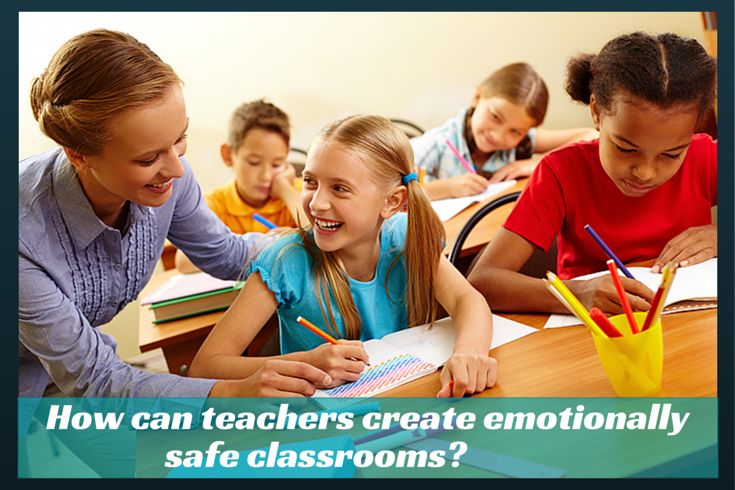How can teachers create emotionally safe classrooms?
Posted by Network Support · Leave a Comment
You may have encountered times or heard of times where terrible events have happened to school campuses. Things like a shooting or other horrific events may have happened to a student’s family, which are made public. What can you do during such times where students have experienced trauma? How can you secure the environment once again? Are there any good solutions? While everything wouldn’t be the same again and things would change, trust, care and relationships must be restored. Building trust takes perseverance and courage. An emotionally healthy environment is secure and ensures that students are happy and having fun while they learn. Here are a few steps to developing an emotionally safe environment in the classroom.
1. Establish Authenticity: You need to be a person who is real and who they can trust. Children are often a lot more perceptive than we give them credit for. If they notice that your reactions are not authentic, they quickly learn to cover up their real selves too. However, when you are honest about who you are, they see you as somebody who can be real and someone they don’t fear relating to. When you are honest about your feelings and failures, they learn to be transparent in the class as well. This could include that you clearly state when you like or dislike something in class or outside of class. This can be done objectively, without bringing anyone down.
2. Acknowledge Importance: Quite often, children who display problematic behavior patterns, have experienced being belittled by adults. They are treated like ‘lesser humans’ and this causes them to lash out, hoping their voice will be heard and their significance acknowledged. In your classroom, you can change such negative patterns and replace them with ones where your students feel a strong sense of self-worth, derived from the way they are treated in class. It is essential for your students to know that they are safe at all times, no matter what. While in no way advising you to condone behavioral issues, what matters is how you respond to these issues. Sometimes it is just a matter of how you correct a student, taking care to separate the action from the person. Let them know that while you may not like that they are talking while you’re teaching, this does not mean that you do not like what they have to say. Give them a specific time to voice their own opinions.
3. Learning to Laugh: Admit to your silliness or forgetfulness whenever possible –your ability to laugh at yourself will only help your students feel more comfortable with you and themselves. They will also begin to feel confident to respond to questions even if their answers are absolutely wrong. Using laughter and light-hearted jokes can also help make the class fun and interactive. Make sure that you set clear guidelines for the kind of jokes that can be shared. Degrading or put down jokes are not appropriate. The last thing you want is to set an intensely serious climate in your classroom, where students feel pressured to be perfect. While there is a need for times of seriousness, make sure you also have times where the mood is more light-hearted, and you can interact at a completely different level with your students.
4. Cultivate ownership: It is vital to encourage students to take ownership in their class. Nurturing them to create and use their imagination to design it the way they would like it (to the extent to which the school allows) promotes a high sense of belonging and creates strong bonds among class members. It is highly beneficial for them to learn in an environment they have created together. Drawing a consensus may be your job when there is a difference of opinions. Yet, the classroom’s physical space can be the perfect place where student ownership can be exercised. Encouraging them to build relationships and resolve differences by talking to one another peaceably can also inculcate valuable skills in problem solving and reasoning.
Like this article for teachers?
Browse the Professional Learning Board COURSE CATALOG to find related online courses for teachers in your state. Professional Learning Board is a leading provider of online professional development classes that teachers use to renew a teaching license or renew a teaching certificate.





